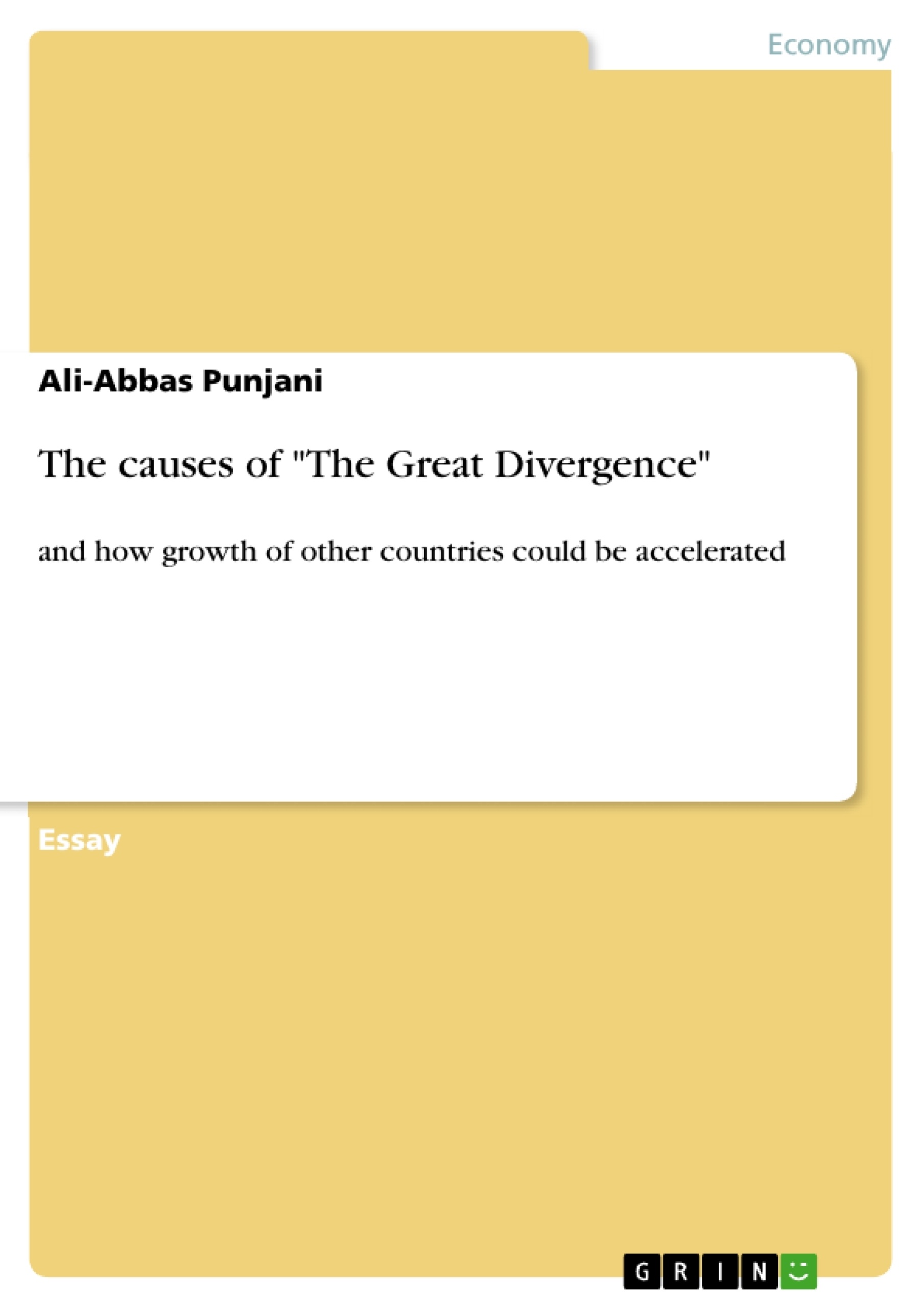In this essay I aim to investigate two theories of economic growth of the western world;
the development of institutions and the exploitation of the periphery. This may give us
some indication of the causes of “The Great Divergence” and suggest methods by
which growth of other, less developed, countries can be accelerated.
Inhaltsverzeichnis (Table of Contents)
- Introduction
- Institutions
- Exploitation
- Other Factors
- Living Standards
- Conclusion
Zielsetzung und Themenschwerpunkte (Objectives and Key Themes)
This essay investigates two main theories of economic growth in the Western world: the development of institutions and the exploitation of peripheral countries. The analysis aims to shed light on the causes of the "Great Divergence" and explore potential strategies for accelerating economic growth in less developed nations.
- The role of institutions in promoting accumulation and innovation
- The impact of exploitation on the development of the Western world
- The significance of other factors, such as geography and culture, on economic growth
- The limitations of GDP per capita as a measure of living standards
- The need for a multi-faceted approach to understanding and addressing economic disparities
Zusammenfassung der Kapitel (Chapter Summaries)
- Introduction: The essay introduces the topic of economic growth in the Western world and its connection to institutional development and exploitation. It outlines the aim to investigate these theories and their potential implications for the "Great Divergence" and development in less developed countries.
- Institutions: This section delves into the concept of institutions as social norms that influence economic behavior. It argues that institutions in the Western world promote accumulation and innovation by shaping incentives and ensuring property rights. The presence of a well-developed institutional framework is linked to higher economic growth and living standards in the West.
- Exploitation: This section examines the role of exploitation in the development of the Western world. It analyzes two forms of world-system: the "World Empire" and the "World Economy," both involving the transfer of resources from the periphery to the core. However, it argues that the scale of exploitation was likely not significant enough to be the primary driver of Western European development.
- Other Factors: This section acknowledges that other factors beyond institutions and exploitation can influence economic growth. It highlights the importance of geography, culture, and climate in shaping economic outcomes. The impact of these factors on GDP rates is discussed, emphasizing their potential to affect living standards.
- Living Standards: This section critiques GDP per capita as a measure of living standards, highlighting its limitations in accurately capturing the complexities of well-being. It explores the potential drawbacks of using this metric for comparing developed and less developed countries, including the influence of negative externalities and the exclusion of non-market activities.
Schlüsselwörter (Keywords)
This essay focuses on the key terms and concepts of institutional development, exploitation, economic growth, the Great Divergence, living standards, GDP per capita, and the impact of various factors, such as geography and culture, on economic outcomes.
- Quote paper
- Ali-Abbas Punjani (Author), 2010, The causes of "The Great Divergence", Munich, GRIN Verlag, https://www.grin.com/document/214681



